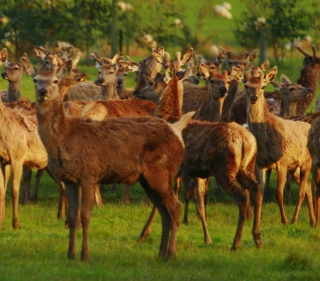Horsemeat or not, we need traceability
 -Gary Hartley, GS1 New Zealand
-Gary Hartley, GS1 New Zealand
Will it be the beef, vegetable or horsemeat lasagne this evening Madam? Europe’s mounting horsemeat scandal will provide a rich diet of jokes for some time. A ‘hoofdunnit’ is how British papers are describing the urgent investigation into how Romanian horsemeat ended up in French supermarkets posing as beef in heat-and-eat dinners.
Of course it’s no laughing matter for French food manufacturer Comigel or for its suppliers who risk huge brand damage. And the episode is a great reminder to New Zealand’s meat industry – farmers, processors, marketers and distributors -about the importance of truthfully representing products to the consumer and indeed, to every other party in the supply chain.
We can safety assume that no New Zealand meat export supply chain looks as bizarre or as unappetising as that of Comigel. The latter was buying frozen meat through a chain that included French, Dutch and Cypriot traders, with the meat source (unknown to Comigel till the scandal broke) being a Romanian slaughter house. Our meat products are rather less commoditised and our supply chains less opaque.
But horsemeat is horsemeat. The core principle is the same for every product and every supply chain -you have to know what you are selling or buying, and to be able to truthfully inform others about it. That horsemeat is, anyway, widely eaten in parts of continental Europe is hardly the point. The scandal breaks at a time of increasing sensitivity to the core principle among European consumers, regulators and food companies. Have no doubt that the stakes are about to rise for everyone who supplies meat for consumption in France, Holland or the United Kingdom (where there is absolutely no appetite for horsemeat).
Just as well we have technology that can enable whole-of-supply-chain track and trace on New Zealand’s red meat products!
We can uniquely identify each animal on farm and in a processing plant, and each carton of chilled meat in a truck, ship or distribution centre Ð and we can automatically record and store this and other relevant information to create an end-to-end view of production and supply. The technology is radio frequency identification (RFID) especially when coupled with Electronic Product Codes (EPCs) for unique identification, and with EPC Information Services for collecting and sharing of all the data. New Zealand is moving steadily in this direction.
In late 2012, a technology group supported by major players in the meat industry including NAIT and grants from the GovernmentÕs Sustainable Farming Fund, DeerNZ and FarmIQ, ran the first end-to-end trial for EPC RFID on chilled venison exports. They tagged 20 deer with RFID ear tags encoded with unique EPC identification numbers on a South Canterbury farm and tracked these animals through processing into prime venison cuts for export to Germany.
The chilled, cartons of product was also tagged with RFID tags and encoded with unique EPC identifiers – identified and tracked through the ports of Lyttelton and Hamburg Ð and in-between, in a temperature controlled and monitored shipping container.
The trial was successful in creating a chainÊ of custody on the product right along the supply chain up to receipt by Prime Meat, a Germany meat distributor who supplies supermarkets in the Hamburg area.
A full report on the trial has just been released by the technology group, the New Zealand RFID Pathfinder Group (www.rfid-pathfinder.org.nz). Obviously there is much more to be learned about the application of EPC RFID but we are confident that this technology will, in time, become a useful tool as the New Zealand meat industry rises to the challenge of accurate and timely information sharing on its export products – and creates still more distance between itself and European practices of blind trading in ubiquitous frozen meat.
On a related front, the National Animal Identification and Traceability scheme (NAIT) is now well established among cattle farmers and traders in this country. The livestock industry is fast becoming accustomed to electronic identification of animals and to building a supply chain database. Deer farmers are next up and then, sheep farmers.
Livestock traceability has huge, immediate value for animal health management and biosecurity. Now, as EPC RFID and related technologies become more proven, the industry is gaining a stronger basis on which to look for further NAIT-related connections that also serve the information needs of processors, marketers and their customers.
The mounting scandal in Europe will bring all the issues into sharper relief and remind us that traceability is not something New Zealand should ever horse around on (OK, I couldn’t resist one feeble joke of my own).



